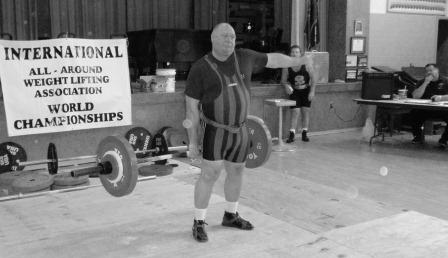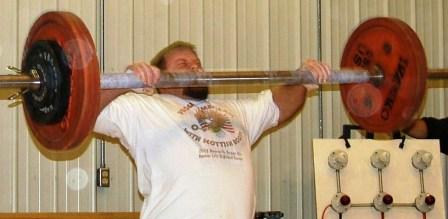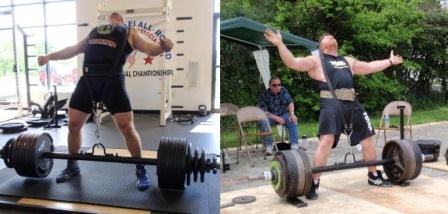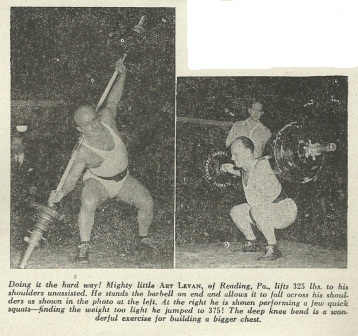One Hand Hacklift (Hack Lift – One Arm)
by Al Myers

George Dick, of Scotland, performing the One Arm Hack Lift at the 2009 IAWA World Championships in Lebanon, PA. George will be in attendance this weekend at the 2012 Championships.
This lift is the “one arm” version of the Hack Lift. It requires great gripping strength, much like the One Arm Deadlift.
The IAWA Rules for this lift are:
C11. ONE HAND HACKLIFT
The rules of performance for the hacklift apply, except that the entire lift will be performed with one hand, the choice of hand is down to the lifter, but it can not be changed during the lift.
Causes for Failure:
1. Failure to use one hand to complete the lift (the same hand throughout).
2. All other causes for failure are the same as for the hacklift.
C10. HACKLIFT
The rules of performance for the deadlift apply, except that the bar will be placed behind the lifter, and will remain behind throughout the lift. The bar may touch the calves and upper legs as it rises. The bar should be raised in one movement, but should the bar bind against the upper legs it is permissible for the bar to stop while a hip adjustment is made, so long as the bar does not lower during that adjustment.
Causes for Failure:
1. Any lowering of the bar during the lift, as the lifter adjusts, to free from binding on the back of the legs.
2. Raising the bar in a series of jerky, pull movements.
3. All other causes for failure are the same as for the deadlift.
This lift was contested at the past USAWA National Championship. Some discussion was done after the meet regarding a rule violation that was being allowed in some instances, which involves the bar remaining “behind throughout the lift”. It is a natural tendency for the bar to want to rotate forward to the side of the arm being used, which makes this a judgement call on the part of the official as to whether it remains behind the lifter . Some leeway must be given, but this lift is a One Arm Hacklift, not a One Arm Side Bend. My feeling on making “this call” is the front of a lifters body. If it rotates forward just slightly, but the bar end is NOT IN FRONT of the lifter then it is a legal lift. Also, the bar must remain behind the lifter THROUGHOUT the lift, thus not allowed to rotate too far forward and then be rotated back into legal position. This point will be emphasized on meet day.
Another rule infraction that often happens is not standing upright at the end of the lift (which is different from the One Arm Deadlift). Since the rules of the Hack Lift apply (which references the rules of the deadlift), a lifter must be standing upright at the completion of the lift.


